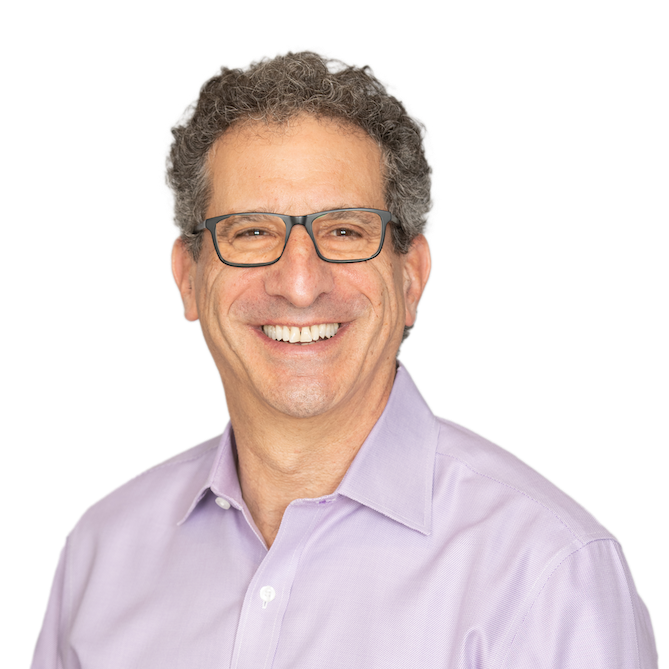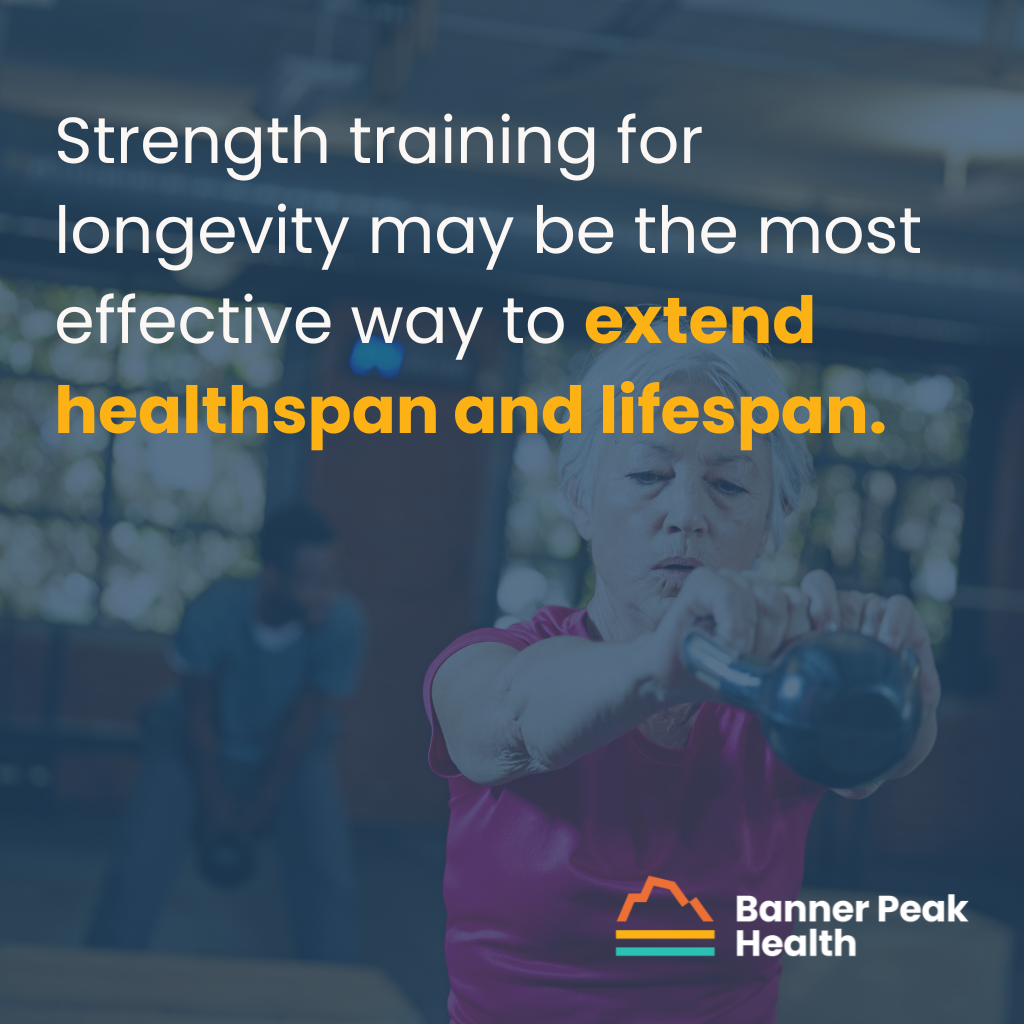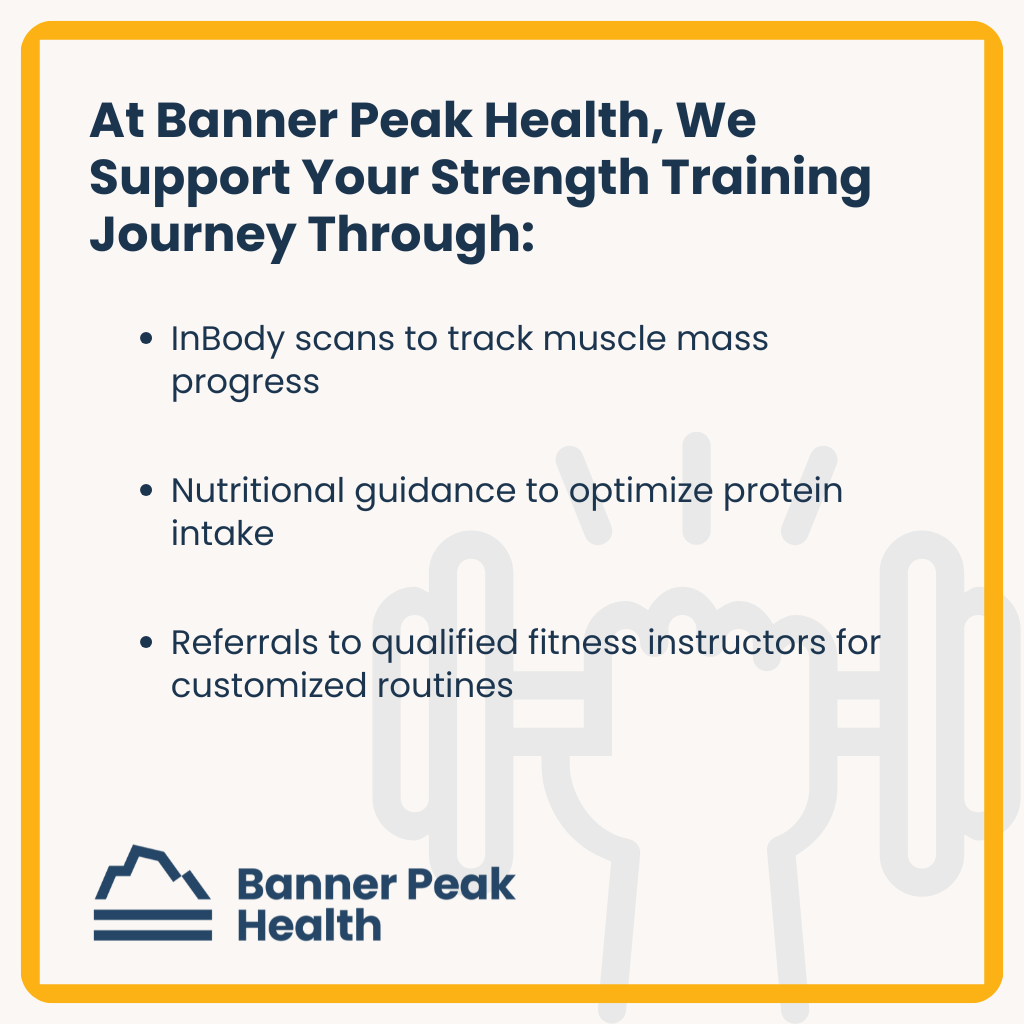Most of us understand that exercise helps us live better and longer.
When we picture training for longevity, we likely envision the diligent hiker climbing a mountain or the dedicated runner rising at dawn. We picture aerobic exercise as the primary contributor to improved longevity and health span.
But resistance training and strength exercises also play a crucial role in successful aging. In fact, recent research demonstrates that strength training for longevity can significantly help extend healthspan and lifespan.
Muscle Mass and Longevity: Understanding Strength’s Impact
When exploring strength training for longevity, we need to distinguish between two highly correlated but distinct concepts:
- Muscle Mass: The quantity of muscle tissue in your body, measurable through techniques such as DXA scans or InBody analysis.
- Strength: Your muscles’ functional capability (what they can actually do).
If mass represents size, strength represents function. We all know people who don’t appear particularly muscular yet possess remarkable strength. Many who begin strength training notice functional improvements before visual changes.
Medical literature robustly links both higher muscle mass and greater strength with lower all-cause mortality, particularly in older adults. One meta-analysis examining nearly two million participants quantified strength using standardized measures like hand grip and knee extension strength, confirming that stronger individuals live longer.
How Muscle Mass Drives Longevity: The Science Behind Training
Astute readers know we must distinguish association from causation. Does muscle mass truly drive longevity, or does it merely distinguish those who are healthy enough to exercise?
While randomized controlled trials face many limitations, three powerful mechanisms explain how resistance training causally improves longevity.
1. Muscle as an Endocrine Organ
Just as fat tissue generates hormone signals throughout the body (most negative), muscle mass produces its own hormonal signals, but these benefit the body.
The more muscle mass you develop and use, the more it sends signals that:
- Improve glucose and lipid metabolism
- Support further muscle growth
- Stimulate bone formation
- Enhance fat metabolism
- Improve cognition
- Reduce inflammation
2. Muscle as Amino Acid Storage
While fat stores energy, muscle stores amino acids, the building blocks of proteins essential for bodily function.
During metabolic stress (famine, severe infection, cancer, or post-surgery), your body enters a catabolic state with limited ability to absorb and process nutrients. At these moments, skeletal muscle provides amino acids for the essential proteins your body needs.
Your body prioritizes proteins in a specific order:
- Hemoglobin for oxygen transport
- Clotting factors to prevent bleeding
- Immunoglobulins for immune function
Excess skeletal muscle serves as a reservoir, allowing amino acids to shift from less vital skeletal muscle to these survival functions.
3. Muscle Preserves Movement and Prevents Falls
Preserved muscle mass allows continued movement and exercise as we age. You need muscle mass to perform aerobic exercise, which itself contributes to longevity.
More importantly, strength and agility protect against falls, a highly lethal risk for older adults. A hip fracture carries a 25% mortality rate within one year. Muscle mass creates a positive feedback loop: more muscle enables more activity, which preserves more muscle.
The Challenge: Why We Lose Muscle as We Age
Think of muscle mass like money in the bank. We reach peak muscle mass in our thirties, then gradually decline. The more “savings” you accumulate early on, the more you can afford to “spend” slowly later.
Three factors drive age-related muscle loss:
- Hormonal Changes: Testosterone and growth hormone levels decline with age.
- Nutritional Gaps: Protein intake tends to decrease while our body’s protein demands increase.
- Lifestyle Shifts: Our daily activities become less physically demanding. How many 60-year-olds climb trees or play on playgrounds?
Rebuilding and Preserving Muscle: The Science of Strength Training
To counter these challenges, we must:
- Optimize Sleep: Testosterone and growth hormone are primarily released during deep sleep.
- Increase Protein Intake: Compensate for age-related metabolic changes.
- Add Resistance Training: Create the proper stimulus to preserve and build muscle mass.
While yoga, Pilates, and bodyweight exercises are beneficial, they can’t provide the supraphysiologic stimulus needed to maximize muscle preservation. For that, we need resistance training with weights.
Muscle Fiber Types: Why Weight Training Matters
Muscles contain two primary fiber types:
- Type I (slow-twitch) fibers excel at endurance, resist fatigue, contain abundant mitochondria, and efficiently use fatty acids for fuel.
- Type II (fast-twitch) fibers provide explosive power, fatigue more quickly, and primarily use glucose metabolism.
Aging disproportionately affects type II fibers. To preserve them, we need activities that stimulate these fast-twitch fibers through shorter, more explosive, powerful movements, which is exactly what resistance training provides.
Weight training enhances the neural connection between nerves and muscles, creates stress that stimulates testosterone and growth hormone secretion, and preferentially triggers type II fiber development.
Training for Longevity: Progressive Overload Techniques
To understand how resistance training strengthens muscles, we must explore progressive overload: gradually increasing demands placed on muscles to stimulate adaptation and growth.
Consider bench pressing. During your first few repetitions, you feel minimal strain. By repetition eight or nine, you feel the burn. By the end of your set, your arms can barely move.
The physiologic signal for muscle growth isn’t distributed equally across repetitions. The pain you feel marks the most powerful stimulus. This explains the adage “no pain, no gain” — the last, most difficult repetitions create the strongest physiologic signal for growth.
You can progressively overload by:
- Increasing weight
- Adding repetitions or sets
- Reducing rest between sets
- Improving technique to target specific muscles
The Creatine Connection
Creatine doesn’t increase muscle mass if you take it while watching Netflix.
Instead, it provides a short energy burst for type II fibers, helping you perform one or two additional repetitions, which deliver the most powerful physiologic signals.
Optimal Training for Longevity: Finding the Right Balance
Your body responds sensitively to strength training signals. Studies demonstrate a 10–17% reduction in mortality with just 30–60 minutes of strength training weekly. Training twice weekly provides substantial longevity benefits.
You don’t need to become a gym rat. You need awareness of why strength training matters and the diligence to incorporate it into your lifestyle.
Today’s Takeaways
At Banner Peak Health, we support your strength training journey through:
- InBody scans to track muscle mass progress
- Nutritional guidance to optimize protein intake
- Referrals to qualified fitness instructors for customized routines
Is there an age when you’re too old to benefit from resistance training? No! Evidence shows benefits in every decade of life.
Muscles aren’t just for aesthetics. They help you live longer.

Barry Rotman, MD
For over 30 years in medicine, Dr. Rotman has dedicated himself to excellence. With patients’ health as his top priority, he opened his own concierge medical practice in 2007 to practice medicine in a way that lets him truly serve their best interests.





